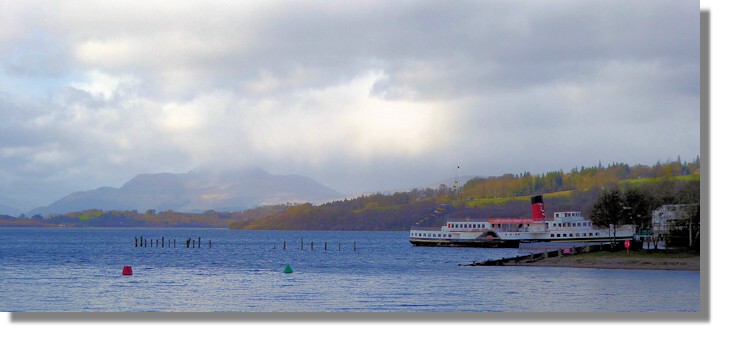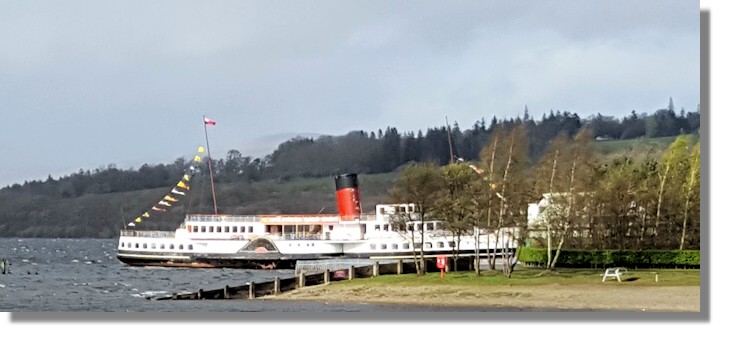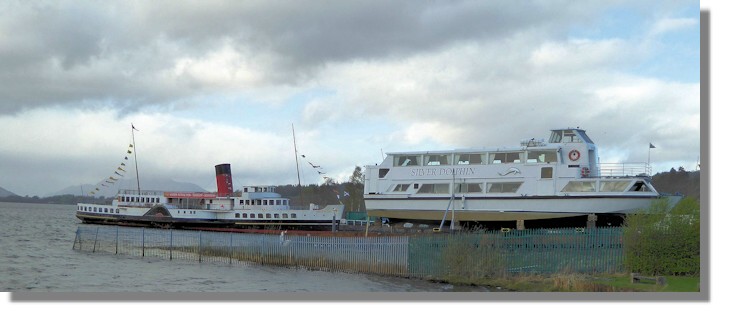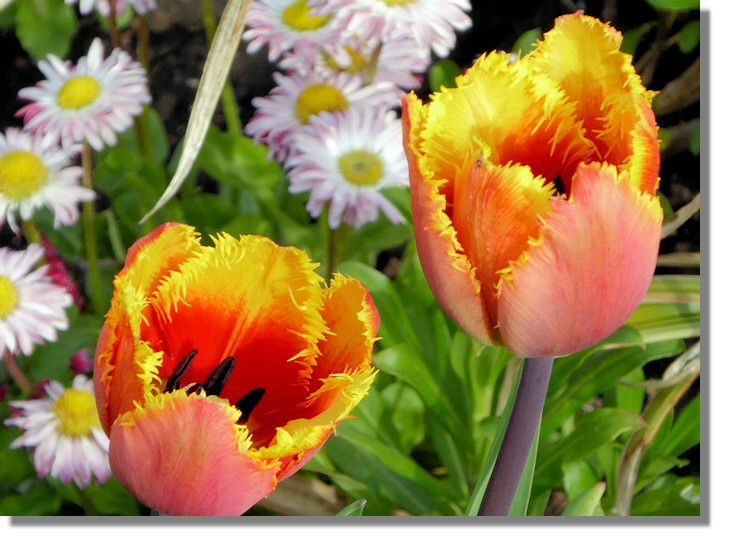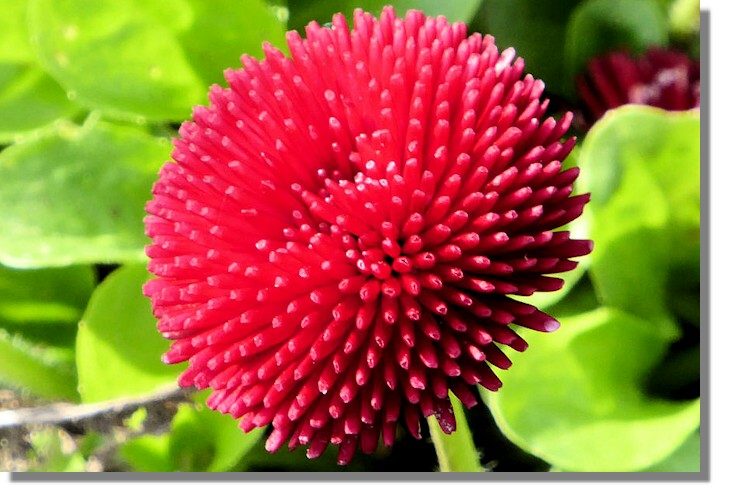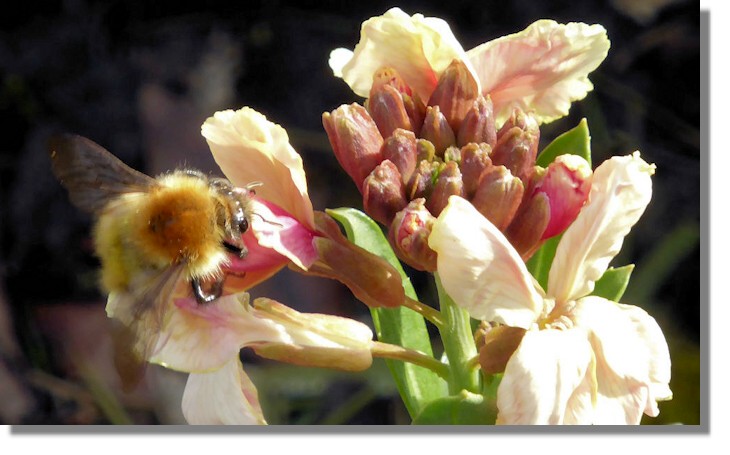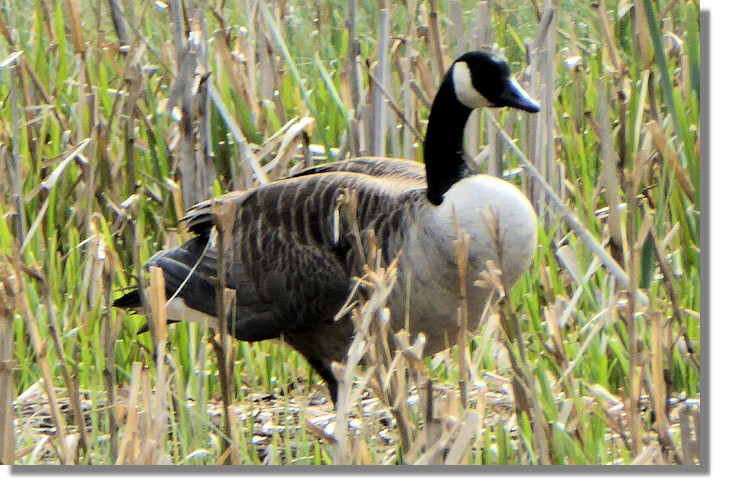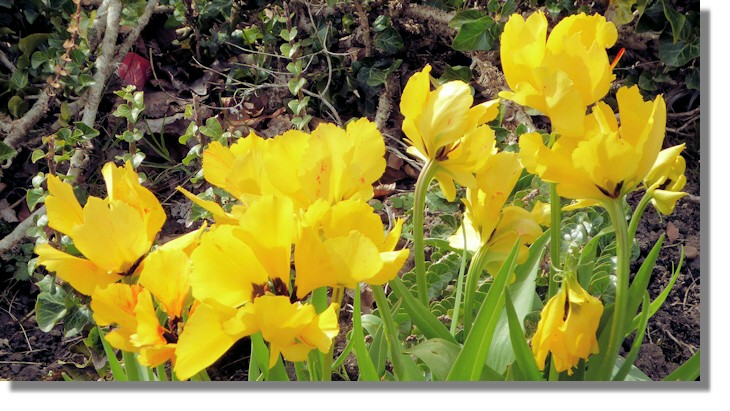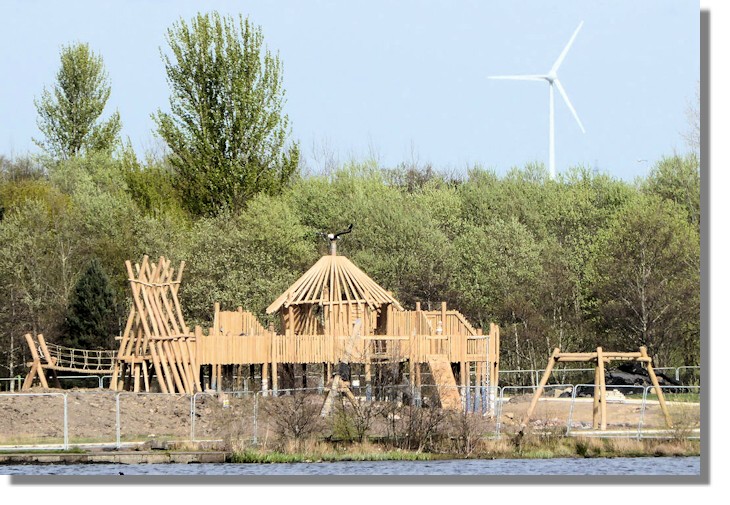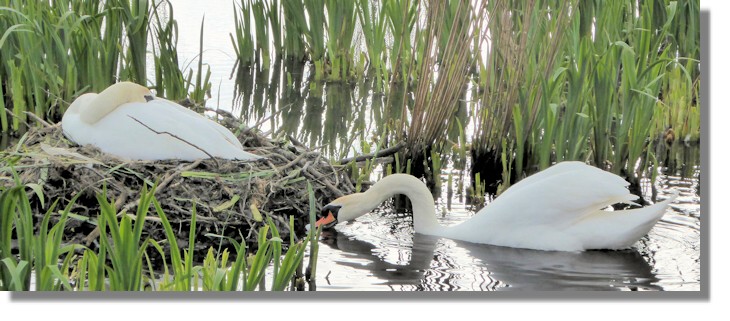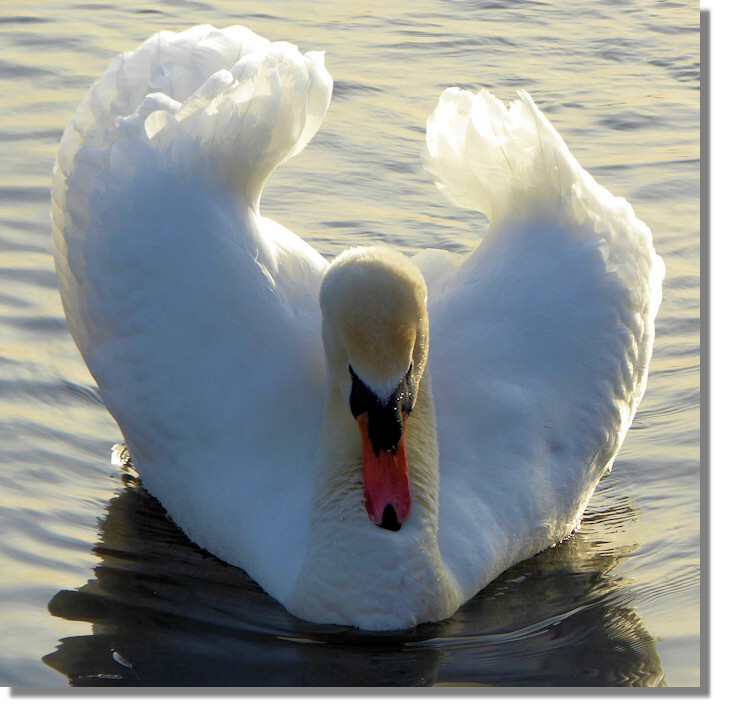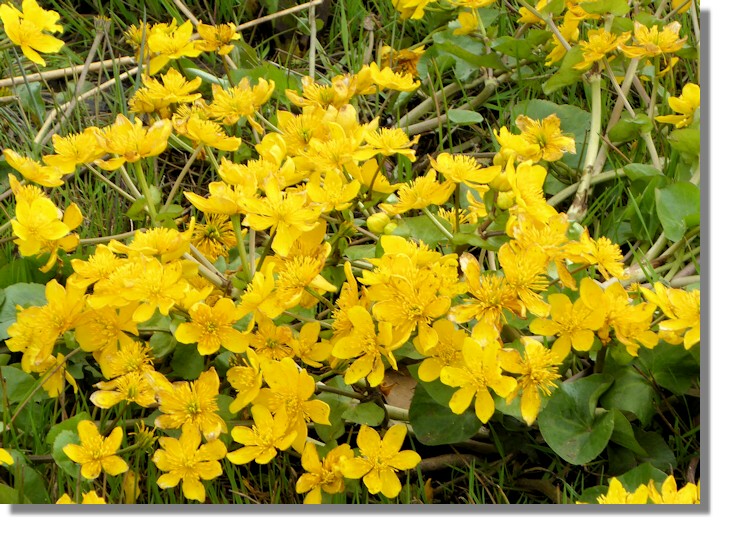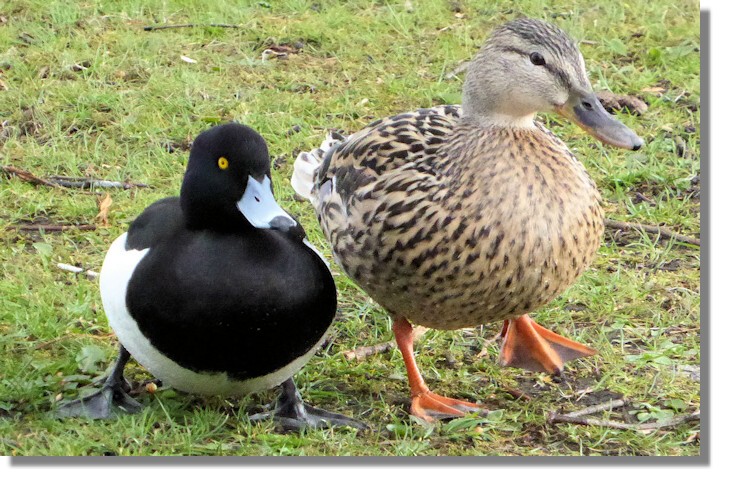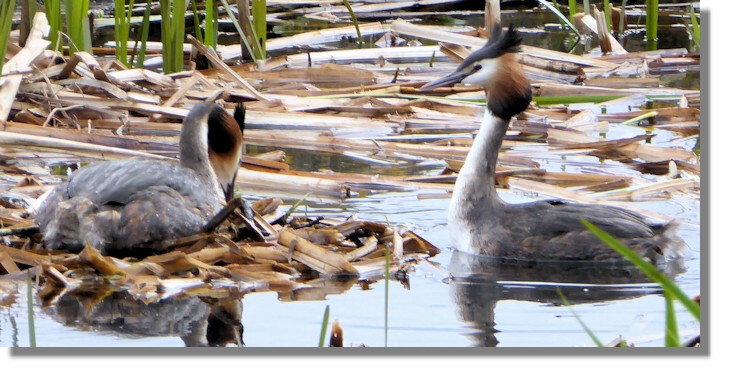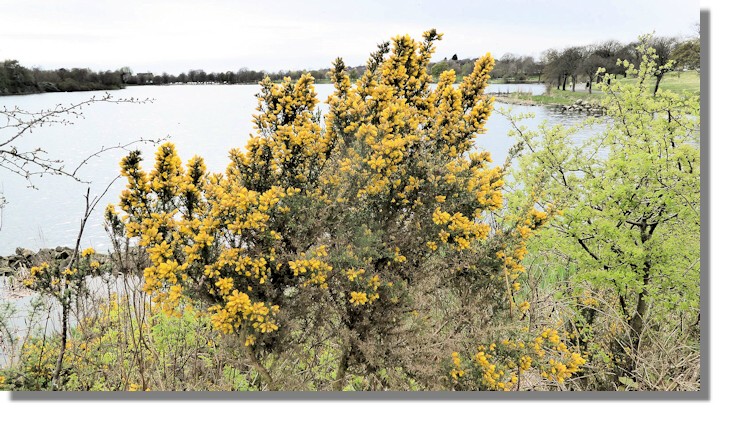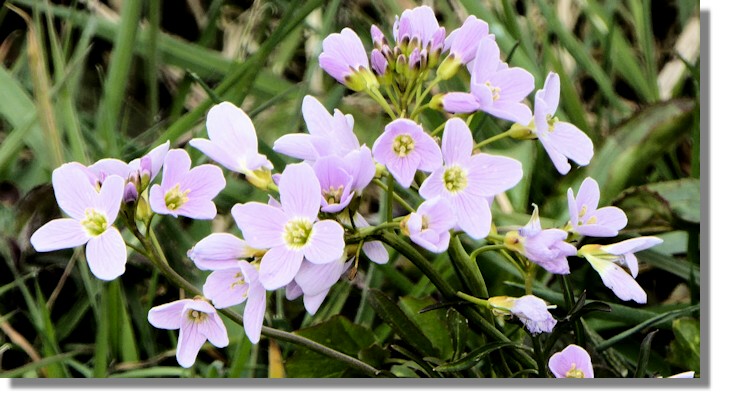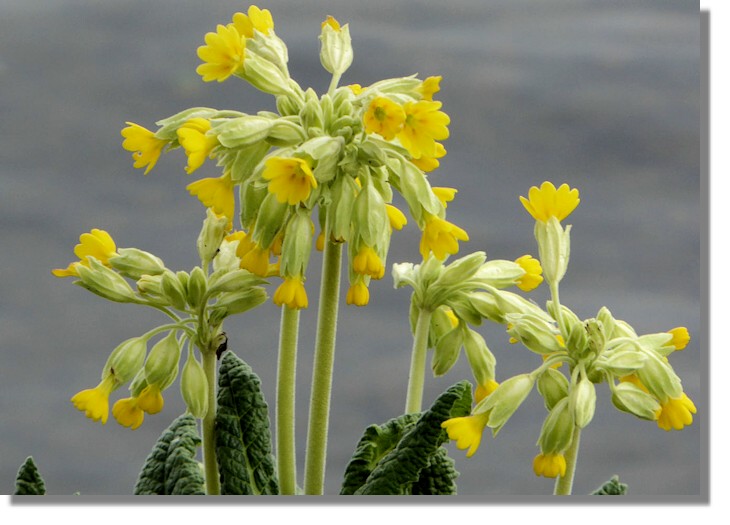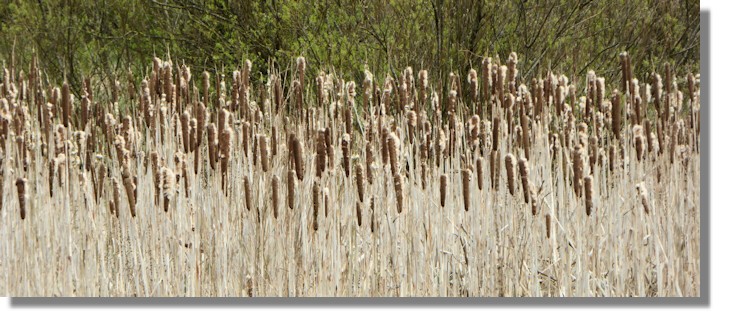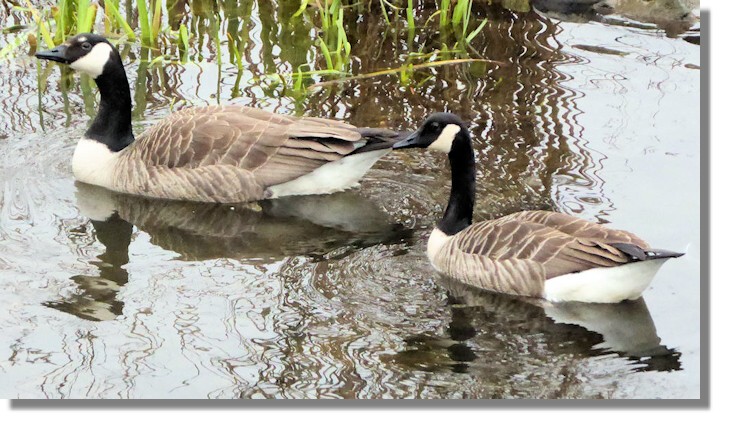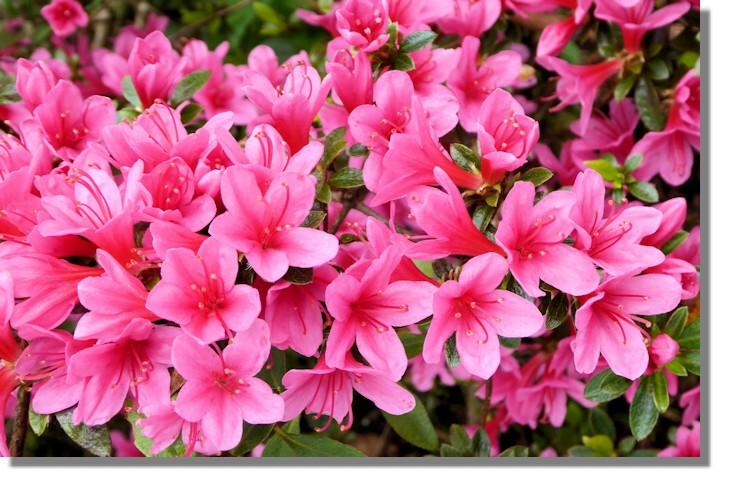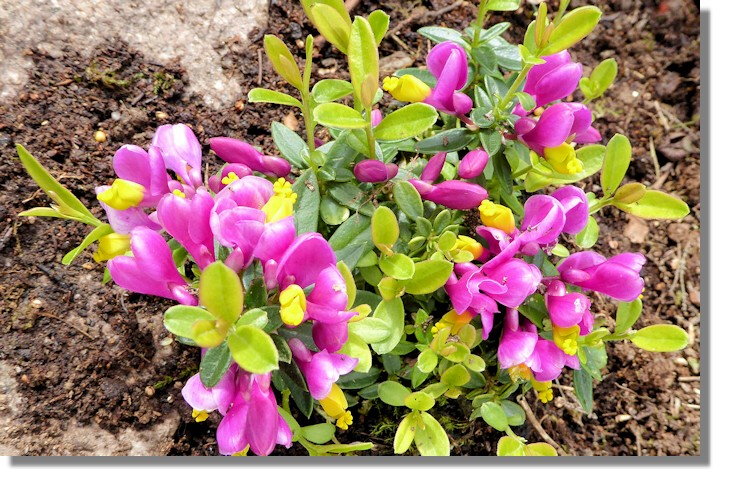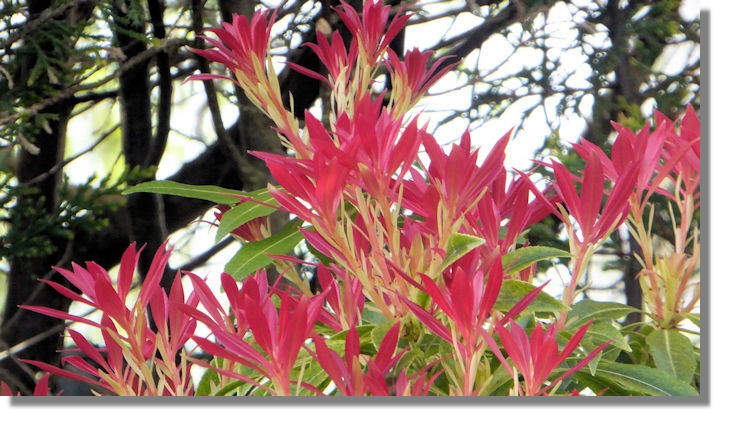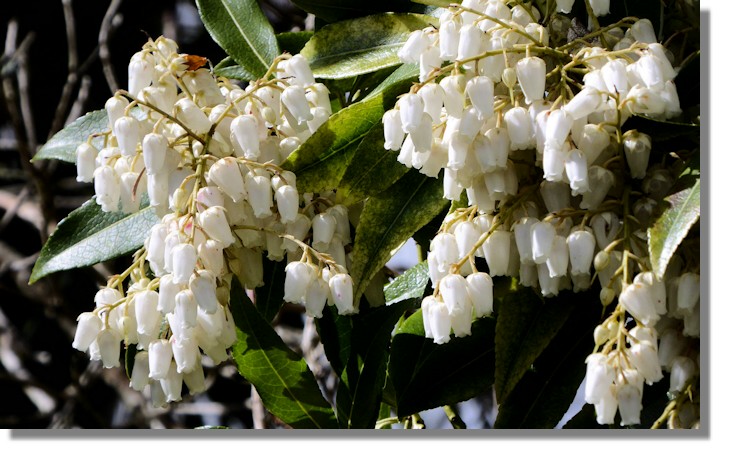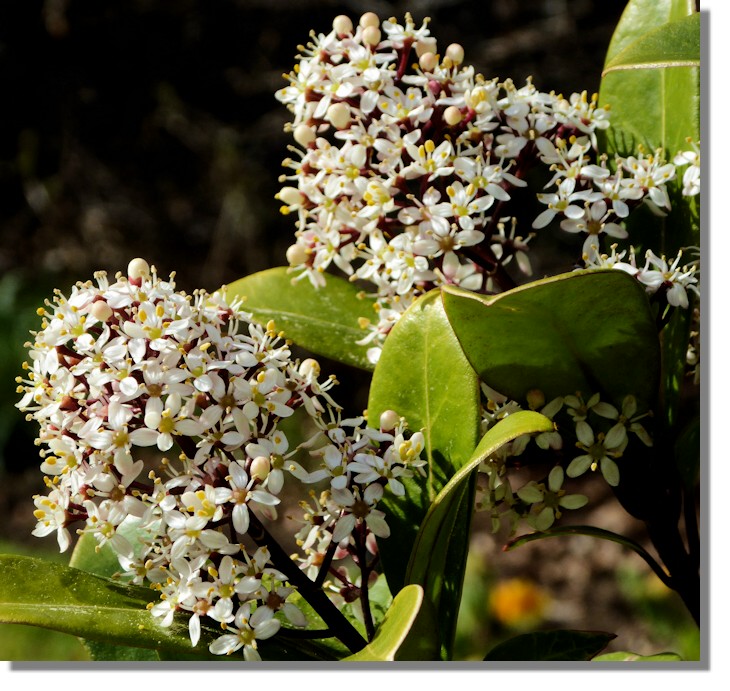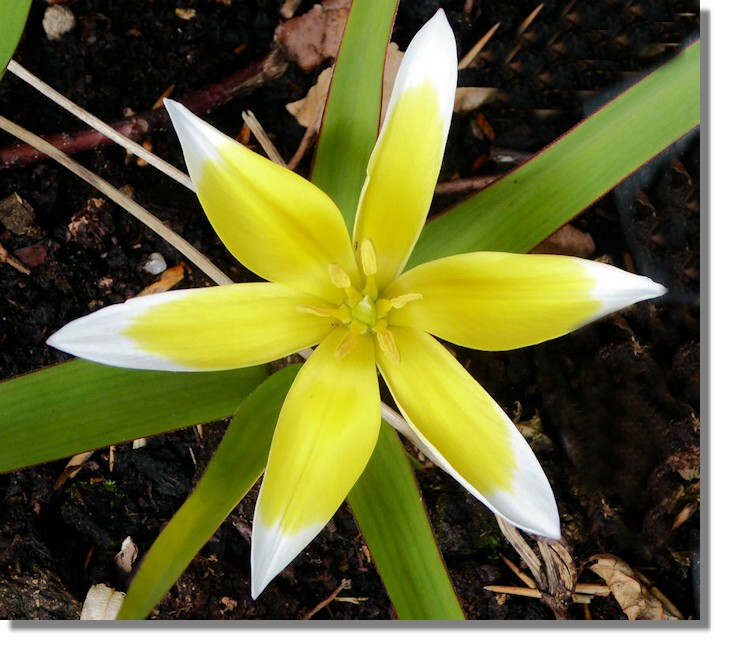Scottie's Photo Diary
- April 2017
Background
I never go anywhere in Scotland without my camera and I take photographs wherever I go. Sometimes I go somewhere specifically to take photographs with a view to adding another page to the Rampant Scotland site. On other occasions I just see something that makes an attractive picture or else it's another graphic to add to the library to perhaps use on a future project. It thus forms a pictorial diary of my travels which can be shared by everyone!This is a selection of photographs I took in April 2017
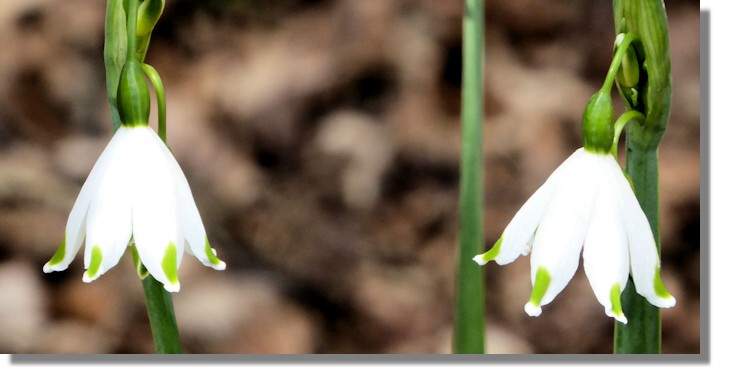
Leucojum
Loch Lomond Shores
On a visit to Loch Lomond I was reminded of the old joke that if you don't like the Scottish weather, wait 15 minutes and it will change! I've been to Loch Lomond and the Loch Lomond Shores tourist attraction many times and have often got sunshine and a clear view of Ben Lomond further up the loch. On this occasion the weather could best be described as "changeable". Certainly I never got a clear view of the top of Ben Lomond but even shrouded in mist there is always an interesting view.
See what I mean about the weather being "changeable"? Despite a chilly breeze we went for a walk to get closer to the Maid of the Loch paddle steamer - and the sun came out! The Maid of the Loch used to run boat trips up the loch - I can still recall such a trip from over 60 years ago and the thrill of going below decks and seeing the engines and the paddles noisily working to propel the ship past the various small villages along the banks of the loch. A group of enthusiasts have been working for over 20 years to restore the vessel (which was originally built on the river Clyde) to its former glory and once again take passengers for trips on the loch. See Maid of the Loch Web site.
Perhaps this graphic should be titled "Yesterday (Maid of the Loch), Today (modern Silver Dolphin) and Tomorrow (refurbished Maid of the Loch)".
Loch Lomond Shores tries to provide a range of facilities to attract tourists to Balloch. In addition to the shops in the retail section (with a branch of Jenners the Edinburgh department store), the large aquarium in the Drumkinnon Tower and the Bird of Prey Centre with over 40 birds and a "TreeZone" Aerial Adventure Course, younger children are well catered for with an obstacle course and rides like the one here.
Drumpellier Country Park, North Lanarkshire
Although there are plenty of daffodils still in bloom (though many have already over) the later flowering bulbs such as tulips seen here are showing off the range of colours and form which are available nowadays.
This is one of the many forms of Bellis which is in the sunflower family, as is the common daisy, Bellis perennis
Even though temperatures have not been particularly high, the bees have been taking advantage of any days with sunshine and are on the go trying to build up the stock of nectar in their hives
While Canada Geese have been established for a long time in the UK, they are usually migratory birds but a pair of them appear to have built a nest on a small island on a loch at Drumpellier. Surprisingly they are near a nesting site used each year by a pair of swans. Male swans can be aggressive but there didn't seem to be any attempt to drive them off.
More tulips, this time a large group of ragged yellow ones with a black centre.
The lochs at Drumpellier, like a number of others in North Lanarkshire and nearby in Glasgow were formed during the last Ice Age as the ice sheet gouged out depressions When the ice later melted they filled with water creating small lochs. Research by archaeologists at Drumpellier found under the water the remains of a "Crannog" - a type of wooden dwelling built on stilts and with a wooden causeway linking to the shore. Using the Crannog design as a starting point, the North Lanarkshire Parks Department decided to build a wooden building resembling one of these ancient structures. But unlike the Crannog reconstruction at Loch Tay in Perthshire, this structure is being built on dry land - and will be a children's adventure play area with, it seems, metal chutes for the kids to slide down. I rather liked this graphic with the design of the building from several thousand years ago and the modern wind turbine behind!
Hogganfield Park and Local Nature Reserve , Glasgow
Hogganfield Loch is another of the depressions left from the Ice Age which has become a loch. There are large numbers of water birds on the loch (many encouraged by visitors to the park providing significant quantities of bread to add to their natural diet! Some of the pairs of swans build a nest on suitable locations each year - this site has seen many cygnets emerging after the eggs have been incubated by the female after the nest has been built by both prospective parents. Although some types of bird share the duties of sitting on the eggs, the female will sit on top of the eggs for around 36 days. The male usually swims nearby on guard duty and (as here) only add a few finishing touches to the nest.
The male swan can be very aggressive especially at this time of year. He gets into "attack mode" and drives away any other swans - including his own offspring from the previous year. His focus is very much on the next generation!
The boggy nature of areas near the loch is ideal for some plants such as Marsh Marigold (also known as Kingcup or its "proper" name Caltha palustris). Its flowers are quite small though larger than buttercups. In the right conditions, however, it soon spreads to create a golden carpet at this time of year. The proper name of "Caltha" is derived from the ancient Greek word for a goblet.
That's a young male Tufted Duck on the left and a female Mallard Duck on the right. The reason I took the picture was because of the strange behaviour of the Tufted Duck - it kept sidling up beside the Mallard and when she moved away the Tufted Duck continued to follow. If they had been the same breed I would have thought it was just the male "Tufty" making overtures to a female friend. But two different species of duck don't usually inter-breed.
These two Great Crested Grebes are quite definitely mates as we have seen them at other times performing the intricate courtship dance, ducking and weaving and presenting pond weed to one another with the male bird fluffing up its head feathers. They have constructed their rather basic nest of a few dried reeds - it's a miracle that any eggs actually survive to form the next generation!
Thorny Gorse (also known as Whin or Furze or by its "proper" name Ulex) is closely related to Broom. The plants can spread across hillsides as their seeds become widespread and many hills in Scotland can be covered in their yellow flowers. It can flower a bit in winter but mainly bursts into bloom in the spring. It thrives in poor soil and can survive moorland fires with its seeds being opened by the flames.
Cuckoo Flower - also known as lady's smock or by its botanical name Cardamine pratensis, grows to 40/60 centimetres tall with small pink (sometimes white) flowers and it prefers to grow near water - and there's plenty of that at Hogganfield Loch. The name of the plant is said to derive from the fact that it comes into bloom at around the time the cuckoo bird arrives in the UK (though that could be applied to many other spring flowers! Cuckoo flowers are a favourite food plant for Orange Tip butterflies which start flying around the Cuckoo flower comes into bloom.
Primula veris (also known as cowslip, common cowslip and cowslip primrose is one of the large family of primroses. The plant frequently grows on boggy, slippery ground which may have been the origin of its name. The flowers grow on long stems and produces clusters of 10 to 30 blooms on one stem. Traditionally, its leaves have been used as a salad green in Spain and in the UK it is sometimes used to flavour country wine.
Bulrushes always make me think of the Biblical story of Moses in his basket but in addition to Egypt it grows in wetlands in many parts of the world.
The two Canada Geese here at Hogganfield could be the same birds as the ones spotted at Drumpellier. The two locations are only a short distance from one another (as the goose flies) and a pair of Canada Geese is not a frequent sight in these parts of the country.
My Own Garden, East Dunbartonshire
Now that the azaleas are in bloom I know it must be spring - even though overnight temperatures towards the end of April were down below 0C/32F and there was snow in Aviemore in the Highland region of Scotland towards the end of April. They could have used more snow earlier in the year when the ski resort had little snow on the ground to attract more customers to the Grampian slopes! Fortunately, from the azaleas point of view, the snow did not extend as far south as central Scotland.
I needed the plant label in the garden centre to find out the name of this little plant. Polygala is apparently commonly known as milkworts or snakeroots. The plant is found in many parts of the world - but I've never seen it before. The name Polygala is derived from the ancient Greek for "much milk", since the plant was thought to increase milk yields in cattle. As a perennial it should keep flowering in future years. There is a large number of different species of this plant.
Dicentra Spectabilis, often known as bleeding-heart for obvious reasons, is a perennial flowering plant with curved branching flower stems. It tolerates being grown in shady locations (this one has a garage wall on one side and the wall of a house on the other). Despite that, it reliably produces an excellent quantity of flowers every year without the need for any effort on my part!
Some people might not like living under the flight path into Glasgow Airport. But regular readers of Scottie's Diary will know that I have had a long standing interest in aviation. So I enjoy seeing the different types of aircraft flying overhead - the telephoto lens may give the impression that they are close by but in fact at this point on their approach they are still at 2,500 feet. In the days when I was a frequent flyer to London I often was able to look down on my house from the aircraft I was flying on as we headed for Glasgow Airport (on the other side of the river Clyde). If you are interested, this is a Boeing 737 of Jet2.com airline which is based at Leeds Bradford airport in England and has a fleet of around 60 aircraft serving over 200 routes. it is the fourth largest scheduled airline in the UK.
Leucojum looks like a giant snowdrop and is sometimes called summer snowflake, spring snowflake or Loddon lily. It also has other common names including snowbell, dewdrop, and St. Agnes' flower. Leucojum is native to central and southern Europe. Its stems are longer and the flowers larger than snowdrops and it tends to flower slightly later in the spring. The flowers are bell-shape and white, with a green (or sometimes yellow) spot at the end of each petal.
Pieris "Forest Flame" is a great shrub - it not only has dark evergreen leaves but the new leaves are initially a bright red colour turning pink, then cream and finally green. But the shrub also produces large clusters of small cream, bell-shaped flowers. (See next graphic)
Pieris is also known as andromedas or fetterbushes in North America. This is a close-up of some of the flowers which spread over a wide area of this tall shrub in spring.
As its name implies, Skimmia Japonica originated in Japan but also in China and south-east Asia. It can grow eventually to 20 feet tall (although some cultivars have been produced which remain more compact. It has glossy evergreen leaves which is always good in winter time. Some varieties also produce small clusters of red berries.
To be honest, I'm not certain what this flower is - I think it is a dwarf tulip planted last year but I no longer have the packet it came in!
If you want to read the other Diary entries going back to 2009, there is an Index page.
